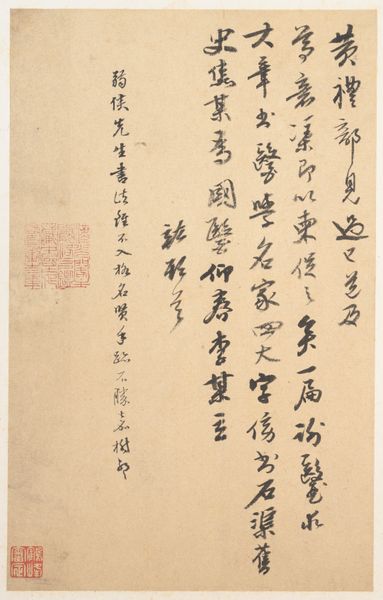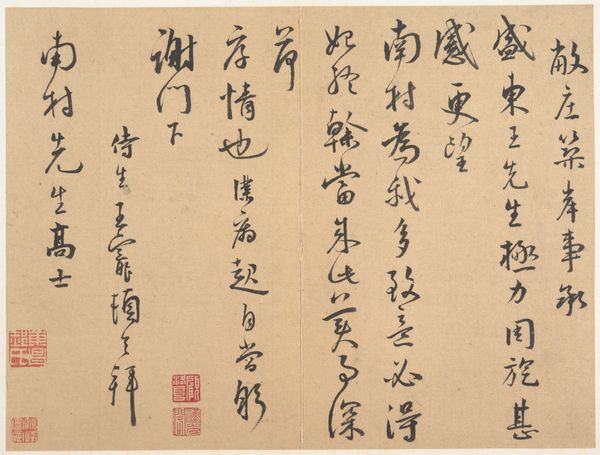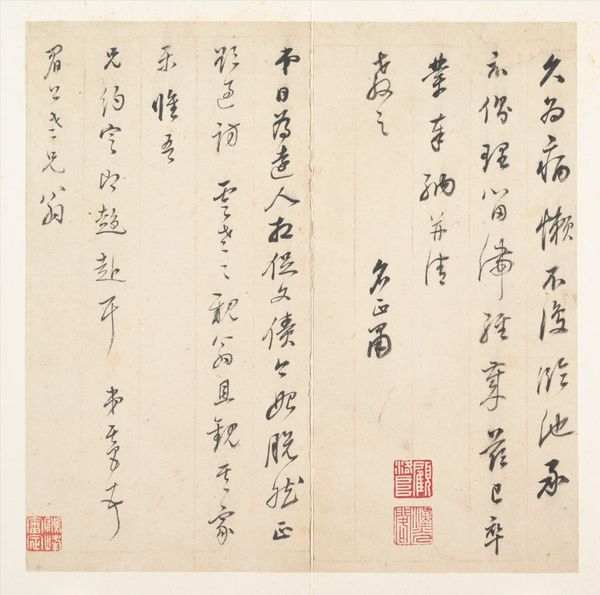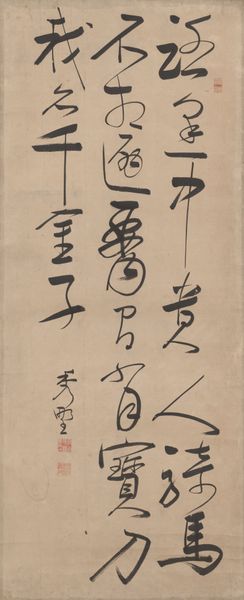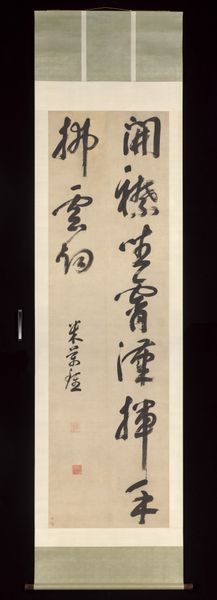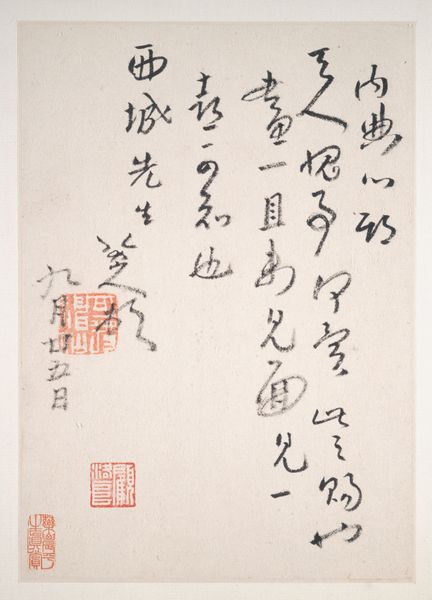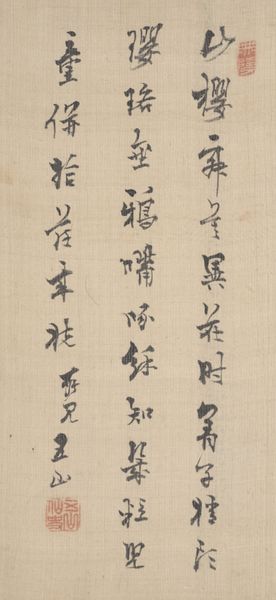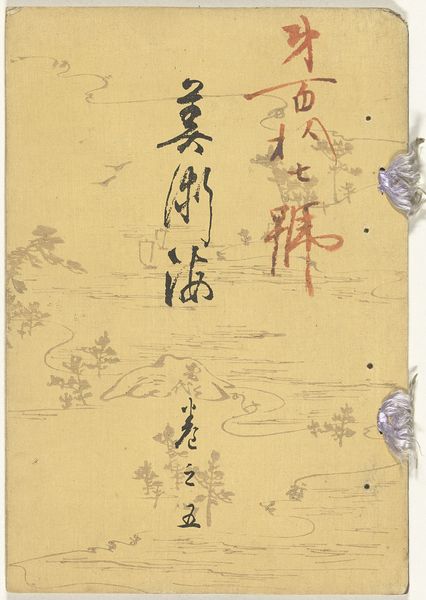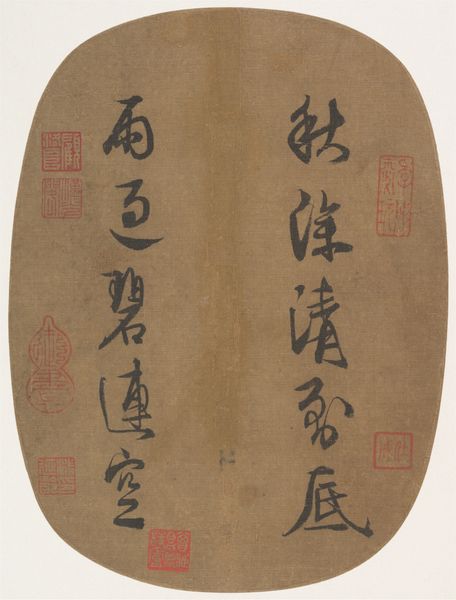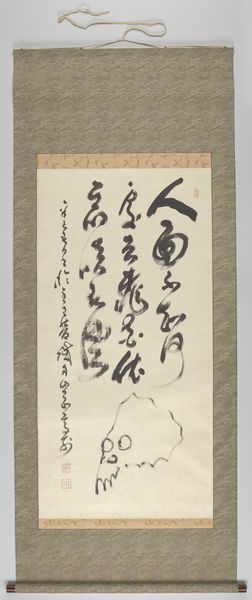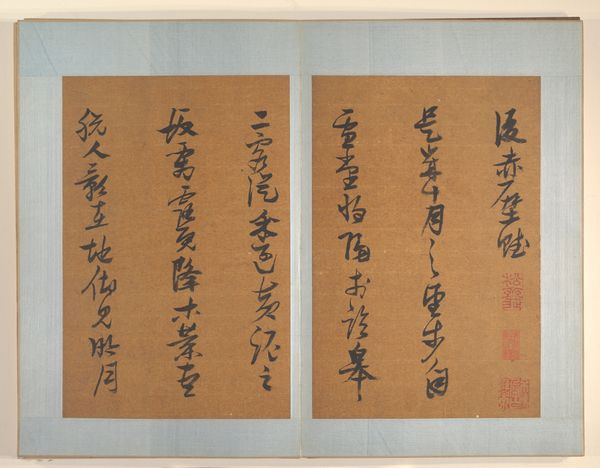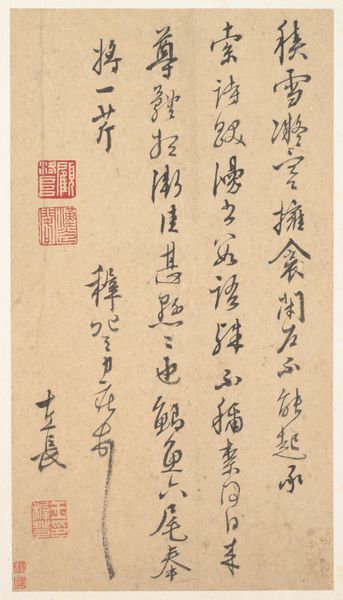
drawing, paper, ink
#
drawing
#
asian-art
#
paper
#
ink
#
coloured pencil
#
line
#
watercolour illustration
#
calligraphy
Dimensions: height 129 cm, width 40 cm, width 56.5 cm, width 667 mm, diameter 49 mm, diameter 34 mm, height 7.5 cm, width 70 cm, depth 8 cm
Copyright: Rijks Museum: Open Domain
Editor: So this is Kai Baoshan’s "Rolschildering," from 1924, created with ink and drawing on paper. It's presented as a scroll, and I find the calligraphic lines very striking. What layers of meaning and interpretation do you see in this work? Curator: This piece isn’t merely a decorative scroll. We have to ask: whose stories are amplified through traditional forms, and whose are erased? How might we view calligraphy, historically a practice of the literati, as a form of cultural capital that simultaneously empowers and excludes? Consider the role of language itself. Who had access to literacy and education during that time, and what sociopolitical implications does that hold for the creation and reception of this piece? Editor: That’s a fascinating way to look at it! I was focused on the aesthetic qualities and the brushstrokes. What's the significance of presenting it as a hanging scroll? Curator: The hanging scroll format, deeply rooted in East Asian tradition, allows the artwork to be integrated into everyday life, unlike, say, Western easel paintings. This hints at the function of art within society: how artworks mediate our experiences, beliefs, and power dynamics within domestic and public spheres. Whose lives are being reflected, and how? Consider also how the physical act of viewing a scroll – unrolling and contemplating it – creates a performative encounter with art, laden with rituals. Editor: It's made me think about the socio-economic structures reflected and challenged by the piece, far beyond its beautiful aesthetic surface. Curator: Exactly. By considering it as a site of socio-political engagement, and not just a formal exercise in brushstrokes, we might unveil and rethink dynamics of race, gender, and power that these artworks engage. Editor: I hadn’t really considered that! I appreciate your insight in connecting this piece to those broader cultural narratives and critical theory.
Comments
No comments
Be the first to comment and join the conversation on the ultimate creative platform.
